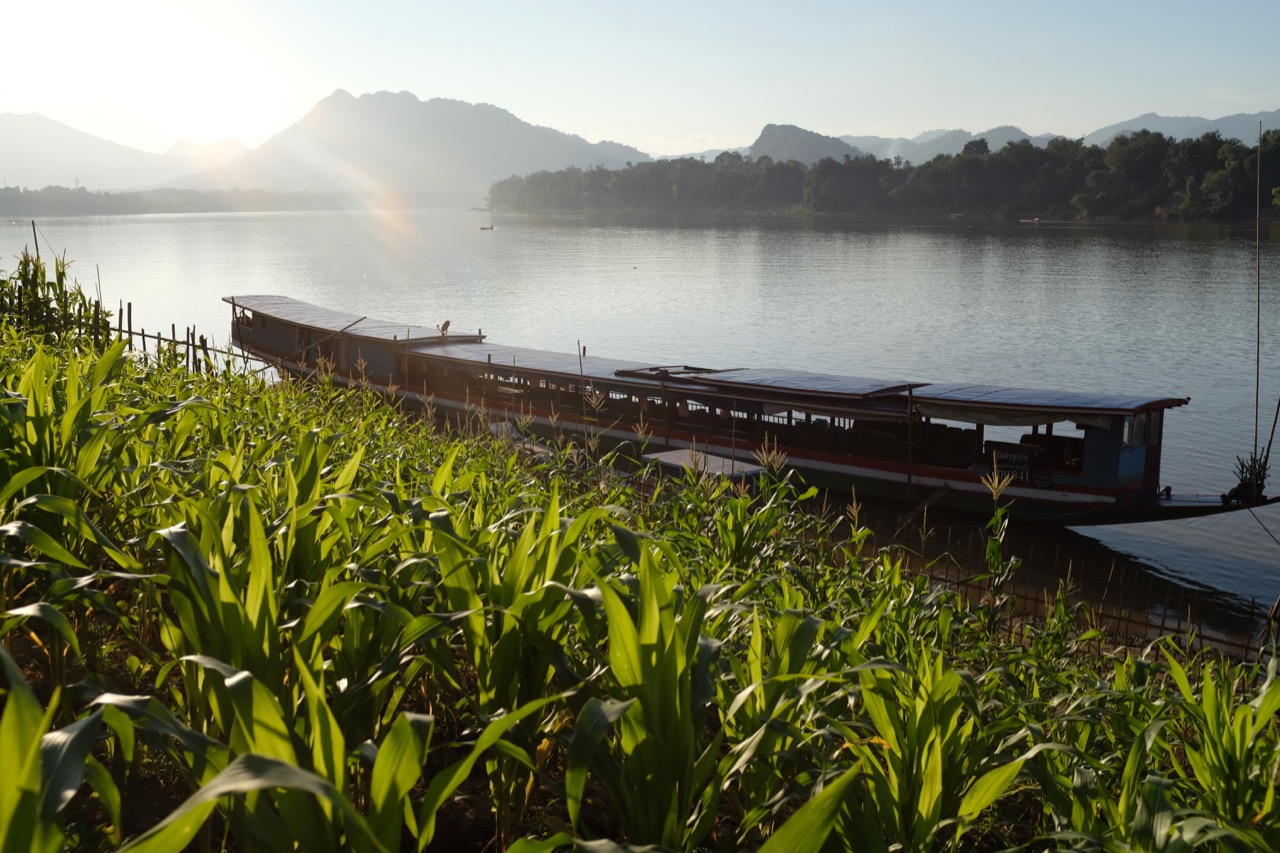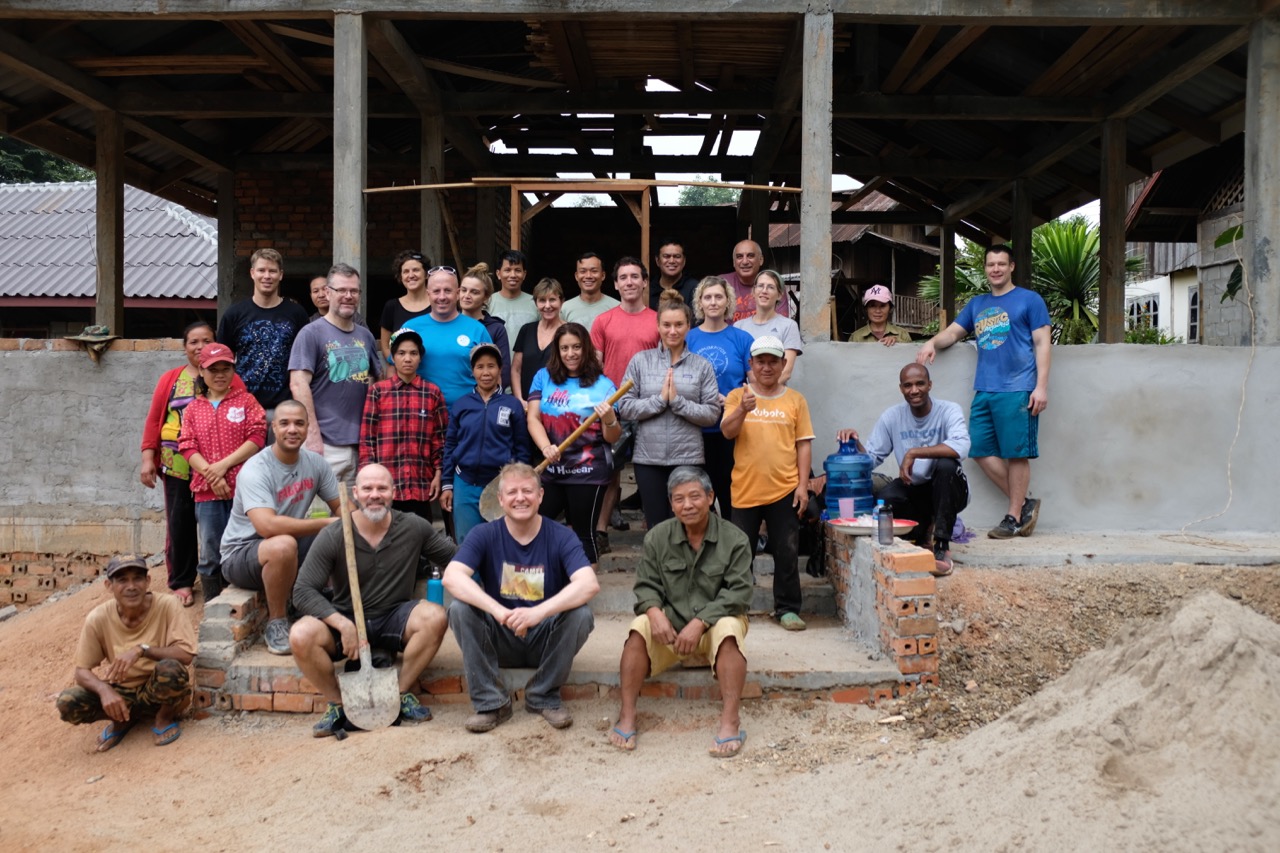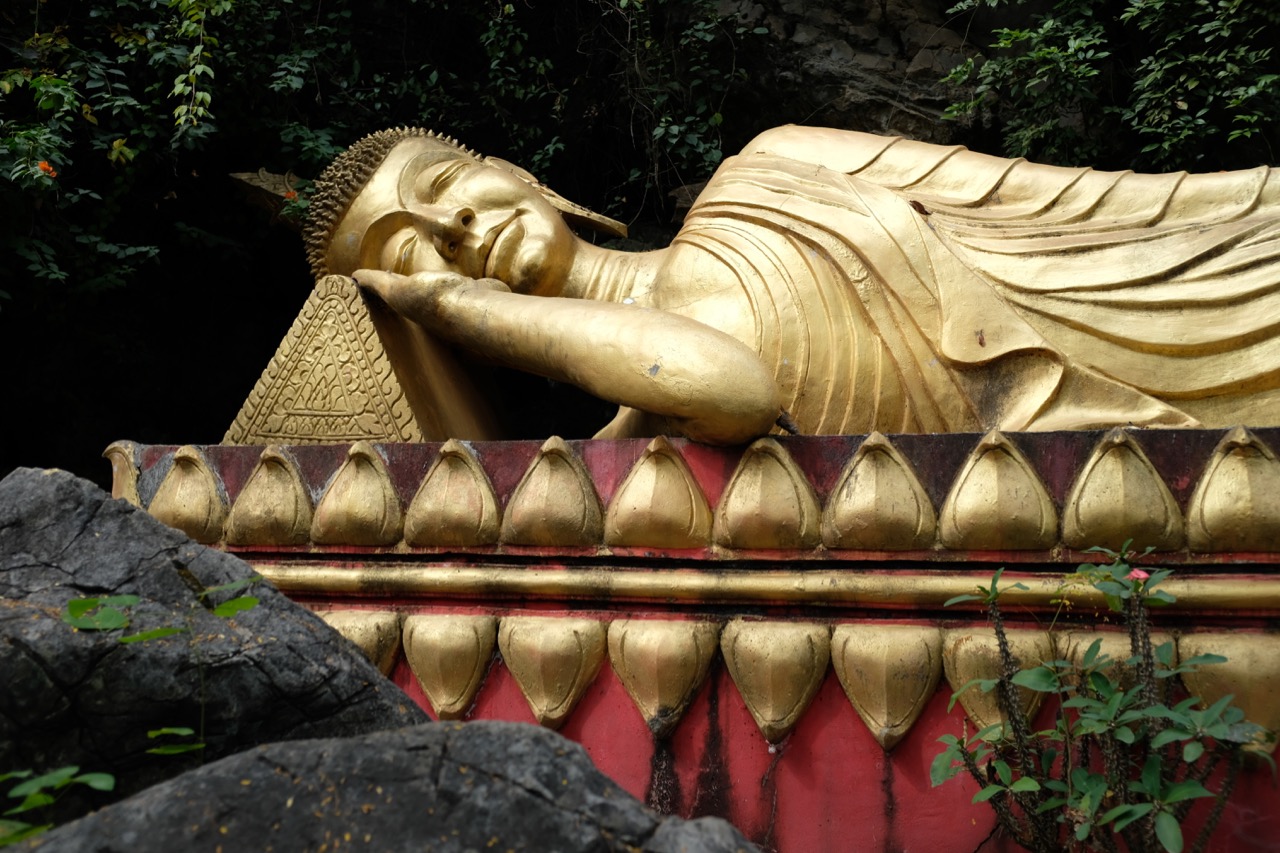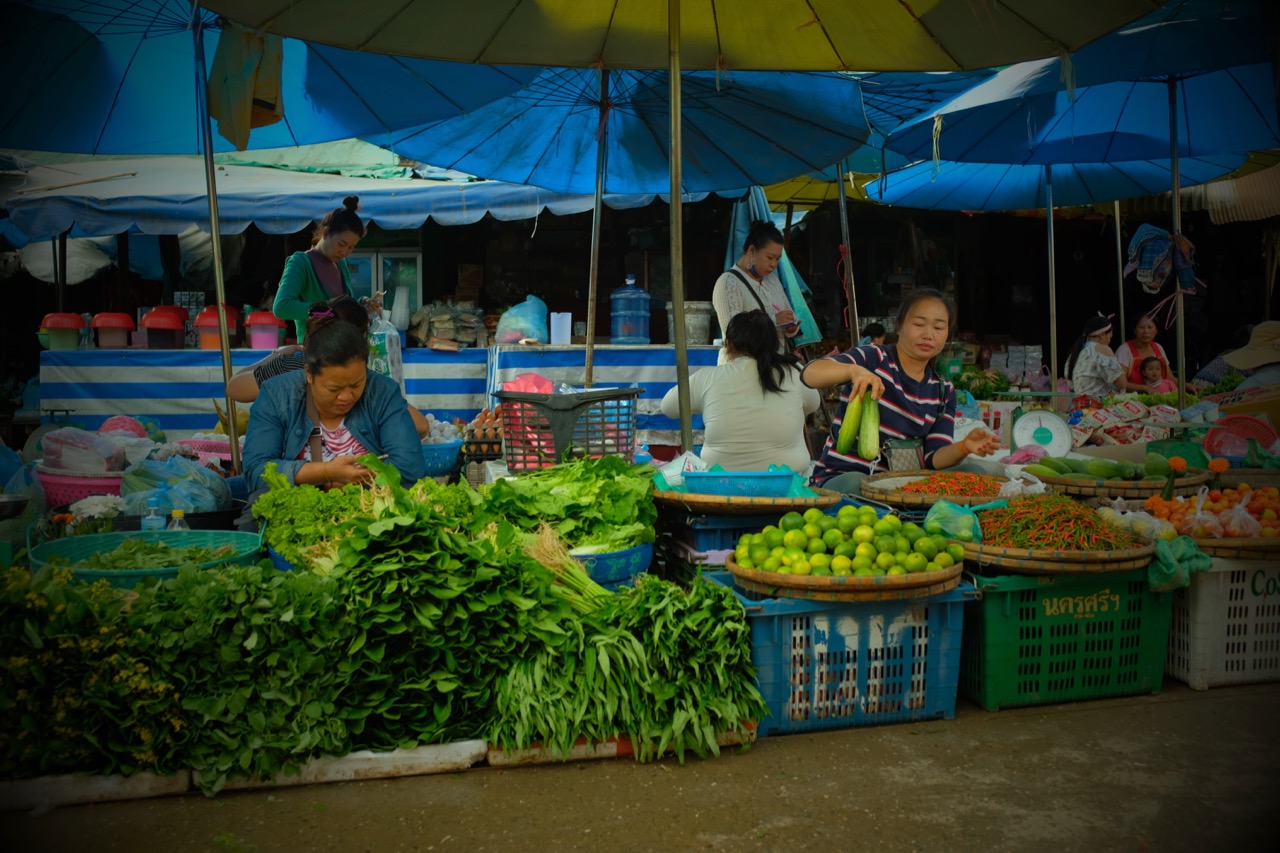This year, I have been to several professional conferences. Normally these are held in international hotels in big cities, such as EARCOS at the Shangri-La in Kuala Lumpur and the CIEE Conference in the Arts Hotel in Barcelona. While these were both great conferences and luxury venues, I find that the standard conference model of spending eight to ten hours in windowless conference rooms attending talks and panels can get pretty monotonous, no matter how good the speakers, panelists and conversations may be. It can also be a bit intimidating and overwhelming to be in a conference with hundreds if not thousands of other attendees.
Thus, when I was invited to attend a small conference in Luang Prabang featuring just a couple dozen educators, I was intrigued, and immediately I signed up. The conference organizer was Les Millard, Director of Educational Programming for Rustic Pathways. I had met Les last year at the EARCOS leadership conference in Bangkok, and again this year at EARCOS in KL, which I attended in my capacity as a member of the Board of Trustees at Shanghai American School.
For me, the EdNet Conference ticked off a few boxes. It was focused on experiential learning and service learning. I know something about experiential learning—this is one thing that drew me to teach in China in the first place. On the other hand, I know little about service learning and need to learn more. Also, I had never been to Laos before, and I have been taking a much stronger interest in Southeast Asia since my recruiting trip there last year. As a member of the Shanghai American School board, I was hoping to share some insights from the conference with fellow board members—which I did last night during our Board meeting in Shanghai. Moreover, in my new role as Study Abroad Director for Duke Kunshan University, I hope to develop some opportunities for study abroad in Southeast Asia, and for service learning, and this was a good opportunity to do both.
Before I decided to attend this conference, I did not know much about Laos, let alone Luang Prabang. In the run-up to the conference, which lasted from Dec 7-9, I did some reading from my small but growing collection of books on Southeast Asia. I found that relatively little is written about this small inland nation in comparison to the others that surround it, namely Thailand, Cambodia, Burma, China, and Vietnam. Located on the Mekong River in the northern part of the country, Luang Prabang is a UNESCO world heritage site, so it’s fairly well known as a travel destination, but still not a major one (thankfully, as it turns out). I’ll get back to what makes Luang Prabang an important heritage site and a great place to visit, but first, here’s my account of how the conference went.
I arrived a day early, on Dec 6, since the flight to Luang Prabang from Shanghai didn’t allow me to get there in time otherwise. The flight from Shanghai is on China Eastern Airlines and it runs from Shanghai’s Hongqiao Airport to Kunming in Yunnan Province, and then a transfer to another flight from Kunming to Luang Prabang. All in all, the trip takes around eight hours to complete. I flew out to Kunming in early morning and arrived in Luang Prabang by mid-afternoon, where I was greeted by Les and some of the local staff members and taken in a van to the Rustic Pathways Base Camp.
Lao House on Rustic Pathways Base Camp, where I and a few other teachers stayed.
The Base Camp is located just a few kilometers from the town center along the Mekong River. It consists of several traditional-style Lao houses built on stilts (a common technique in areas prone to flooding in this part of the world), surrounding a grassy common area. Down by the river is an open-air lodge protected by a roof, with several rows of tables and benches. We used this space as our dining and conference hall. This makes for a lovely spot for both meals and discussions, and you can watch the boats travel up and down and across the river. Along with a couple of other early arrivers, I was housed in a room in the teacher’s building, which was quite comfortable. Everyone slept well there. Each morning, I found myself being awoken at around 4:30 by the rooster crowing, followed by a chorus of other farm animals. After a couple days, I ceased to notice this as much.
A few other attendees showed up that afternoon and we all had dinner together with Les and his team at a fine restaurant in the middle of town. It was the best meal I’d had in a while. Lao food is scrumptious—more on that later. By this time, an American team member of Rustic Pathways named Keegan had shown up. He’d flown over from Chiang Mai, where he lives. Keegan is fluent in Thai and in Lao (which is quite close to Thai) and he proved very knowledgeable about local and regional cultures and societies. He is quite an asset for the Rustic Pathways Southeast Asia team. Les is based in New Zealand and has Maori heritage, and from the get-go I found him to be a very amiable fellow. He certainly showed great leadership qualities throughout our three-day conference. He and his team kept everything running smoothly. The other members of the local team, Oo, Khamphao, and Somjai were also very supportive, friendly, fun, and inspiring to work with. I won’t soon forget Kamphao’s story about riding on a cow in his young days! We were also joined by two other Rustic Pathways team members named Nathalia and Matija, who flew in from abroad, and for whom I can say the same.
First night dinner at Coconut Restaurant in midtown Luang Prabang. Les is second from right and next to him is Nathalia.
By the following afternoon, the rest of the conference attendees had shown up. Most of them flew over from Bangkok. They’d flown to that city on the previous day from other locations in the region. I won’t go through all the names of the attendees; suffice it to say that they were mostly teachers from international schools in Hong Kong and Singapore, though there were two coming all the way from Bahrain and Dubai. All in all, it was a fantastic group of people, and we got to know each other quite well over the three-day conference.
Our fearless leader Les debriefing us in the riverside lodge after the service learning experience (see below)
Much of our time was spent in the riverside lodge, where we had breakfast, lunch and dinner, and held workshops and talks in between meals. Several attendees gave very useful talks and workshops that drew on their experiences with service learning. They shared their strategies for designing programs and managing trips for different groups and levels of students, while encouraging us all to share our own experiences and ask vital questions.
One of the big takeaways for everyone was the need to prep students for the experience and to debrief with them afterwards. Another valuable lesson was the importance of involving students, parents, and teachers in the planning. Aligning programs and trips closely with school mission and curriculum (and vice versa) was yet another takeaway. I will refrain from a tedious listing of all the valuable points people made. Overall, I felt that I came away with a much better understanding of the philosophies and best practices associated with both service learning and experiential learning.
Some children in the village. One of our vans is behind them on the road.
Performing Service Learning in a Mountain Village
The highlight of the conference was a visit to a nearby mountain village, where we interacted with the village community and helped them work on building a community center, part of an ongoing service learning project organized by Rustic Pathways. The trip into the mountains by vans took about an hour on a very bumpy, unpaved mountain road. Once there, we were shown an elementary school they’d helped build for a neighboring village.
This is the school that Rustic Pathways helped the village to build through their service learning project
Then we got to work on the village community center, which is already partially built. Everyone pitched in and we worked in teams, some working on laying the foundations for a platform that will surround the center, and others inside the center applying cement to the brick walled interior. We had to mix cement on site, which was hard work and involved a lot of shoveling and mixing the cement with shovels. For this task, we were joined by the villagers, both men and women, who formed human chains to pass buckets of water and stones used to make the cement.
I spent a few minutes shoveling stones into buckets to be passed along a human chain of villagers to the mixing spot, before a more muscularly equipped teacher named Nate took over the task.
Pitching in with the others to help mix cement. Even though I did relatively little of the work, my back and neck sure felt it the next day!
I helped out with some of this work, but mostly I was roaming around the village and worksite taking photos of the whole process, which I later gave to Les to upload to his website. I figured I was more useful as a documenter of the experience, and besides, just 20-30 minutes of shoveling and carrying buckets was already enough to make me sore and mess up my back the next day.
Making posts for a platform that will surround the community center.
Some of the other teachers, who were in far better shape than me, were working up a big sweat shoveling and sawing and hammering and moving things around. The villagers seemed to be used to having a lot of foreigners running around their village, since this is a site for service learning activities, though normally it would be students doing these jobs. In addition, the students get to stay in the village and live with the villagers for a few days.
One of the teachers in our group, Dustin, seemed to know what he was doing. Here he applies some carpentry skills to help build foundational posts for a platform that will surround the community center.
One of the lessons we also discussed in the conference focused on the relationship-building with local communities such as this one, and how not to approach them in a patronizing way. For this project, the villagers themselves had come up with the plan to build the community center, and in fact they were far more adept than we were at doing the work of building it. Thus, it certainly wasn’t a case of us going in and “teaching” them how to build things—quite the other way around in fact. I found this to be a good arrangement, since it put us in a position of humility vis-à-vis the villagers, who had the skills yet lacked the means to do this on their own.
Two of our teachers, Tom and Nate, use their ample muscles to help some of the villagers to mix cement for the platform. This was tough work!
Throughout the experience, I was desperate to have some sort of communication with the villagers, and I kept holding back the urge to talk to them in Chinese (which, it turns out, a couple of them understood). While carrying buckets and mixing the cement, I called upon the linguistic skills of Keegan and another teacher in our group named Tama, who speaks Thai as well, and spent some time learning a few words in Lao and in their local language of Khmu. I had a lot of fun asking the villagers how to say things like “shovel” and “bucket” in their language, and counting to five, and asking for names etc., and I believe they had some laughs as well.
Caught loafing on the job while “chatting” in Khmu with some villagers! They were teaching me how to say “handle” and “shovel” (dam and suen as I recall).
Later, when we were debriefing the experience, I did mention to Les and Keegan that it would have been great if we’d had more verbal interactions with the villagers prior to and/or after the exercise, but we were pressed for time and the focus was on helping them with the work. Of course, the point wasn’t to complete anything, just to spend a few hours working with them and further the project even a little, which we did. And I do think that the villagers appreciated the effort we put into the work.
Group photo of the work crew. Behind us is the community center, which will take a while longer to complete. Each group that comes up here makes a modest contribution to it.
Touring Luang Prabang
This reclining Buddha on the hillside of Mount Phu Is captures well the relaxed and meditative atmosphere of the ancient Lao capital of Luang Prabang.
I mentioned earlier in this piece that I would write more about the town of Luang Prabang. While I wasn’t there in the capacity of a tourist, I did get a few chances to walk around the town center and visit some heritage sites, mainly Buddhist temples of which there are at least 30 in the area.
On the first full day I was there, while waiting for the other attendees to arrive, I took a morning stroll from the Rustic Pathways base camp all the way into the town center. Keegan suggested that I check out a local market on the way, which I always enjoy doing since you get to see more “authentic” scenes of the local people in their daily lives. It was mainly a vegetable market, and I could see how Lao food gets its reputation. The variety and freshness of the veggies was on full display in the open-air market.
Local townspeople selling fresh vegetables at a food market just outside the town center.
After checking out the market, I walked into the town center, which is quite small and consists of a main road and a couple of parallel roads running along the two rivers. These rivers converge at the end of the peninsula that makes up the town. This is where most of the temples and other heritage sites are located.
A map of Luang Prabang showing its location on a peninsula wedged in between two rivers, the Mekong and the Nam Khan.
Upon recommendations from others, I walked a few steep flights of stone steps up Mount Phu Si, a small hill overlooking the center of the town, where you get a panoramic view of the town and the rivers that surround and envelop it. Atop the hill is a stupa, which is not meant to be climbed (though this apparently happens too often). There are other Buddhist icons and caves around the side of the hill. I was joined by quite a few backpackers from Europe and Asia, who all seemed quite well behaved. I was told that if you go there for the sunrise or sunset, the site can be mobbed with people.
A pair of tourists take in the view from atop Mount Phu Si, looking out over the Mekong River and the town below.
On the final day of the trip, most of the attendees left for the airport in the morning, but since my flight was in the late afternoon, I had some more time to tour the town. After being dropped off at a nice coffee house on the edge of the town, I walked all the way down the main road to the end of the peninsula where the two rivers meet and had lunch at a nice outdoor café overlooking the rivers.
The “tree of life” mosaic on the back of the main temple in Wat Xieng Thong
After lunch, I visited the most famous temple in town, Wat Xieng Thong, which is famous for its red and gold main hall with its characteristic low sloping roofs, and also for a “tree of life” mosaic on the back of the main building.
A real tree of life along the banks of the Mekong River.
I then ambled back to the coffee shop, where Les and Keegan were waiting to take some of us to the airport for afternoon flights. On the way back, I walked along the Mekong River, where boatmen were waiting to take tourists on hour-long boat rides. The streets were lined with quaint boutique shops and French colonial style buildings housing guest houses and cafes. This is really a tourist’s paradise and has a languid feel to it, though personally I felt it was a bit too touristy to have any “magical” ring of authenticity to it. This is the irony of being given the status of a UNESCO heritage site. On the one hand, as Keegan pointed out to me, this has helped save it from destruction and over-development. On the other hand, it seems that the local economy is now highly dependent on tourism.
Hanging at the coffee shop with Les and Keegan prior to my return trip to Shanghai.
Another thing one notices is how the markets and shops carry all sorts of items that might be labeled “generic Southeast Asia stuff.” There were plenty of market stalls lining the streets by day and by night selling cloths and the usual assortment of other items such as jewelry, paintings, and so forth. In such a touristy environment it’s not so easy to find something to take away that seems unique and precious and indicative of the local culture.
At night the Main Street running through Luang Prabang becomes a big night market featuring stalls like these.
Keegan recommended that I buy some of the colorful pajama-like pants for my daughters, which students like, and he helped me bargain with the seller. I also found a boutique shop across from Wat Xieng Thong that sells paintings and other handcrafted items made by the proprietress of the shop. I picked up some bamboo-paper notebooks decorated with images of Bodhi trees and handicrafts for small gifts for folks back in China.
My overall impression of the town is that, like many such towns around the world, it is a contrasting pastiche of tourist-focused center and local periphery. The local villagers seem to possess the basics for their livelihoods. Most of them ride around town on motorbikes, which is typical in Southeast Asia. Poverty increases as you get up into the mountains, where some of the tribes have been pushed over time, such as the Khmu—I’m going out on a limb to say this, as I’m not too familiar with this country and its history, but this was my overall impression.
While some folks still ride bicycles to market, most seem to prefer motorbikes for getting around town.
Before arriving, I did read a chapter in a book I have on UNESCO heritage sites about Luang Prabang and the changes it has gone through since it became a popular tourist site. All in all, I’d have to say that gaining the UNESCO world heritage stamp has been a blessing for this town, allowing it to keep a “timeless” look, while attracting enough tourism to support the local economy. There is little if anything in the way of nightlife, let alone other things that normally arise with a great deal of tourism in a bigger place. The languid feel of the town is a nice contrast to China with all of its rapid development and huge and endless construction and modernization projects, not to mention the pollution that goes along with all that. Luang Prabang strikes me as a fairly clean, pristine, unique, and tranquil spot in the middle of Southeast Asia, and a place well worth spending a few days for travelers in Southeast Asia. Here’s hoping that this town can keep it that way for the foreseeable future.























